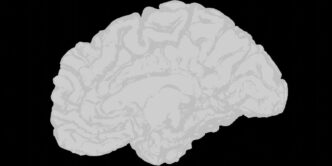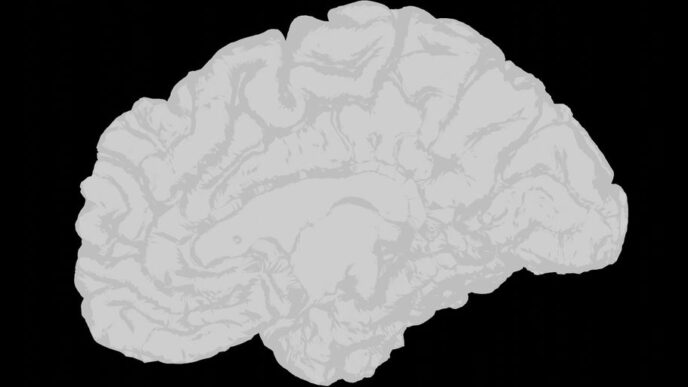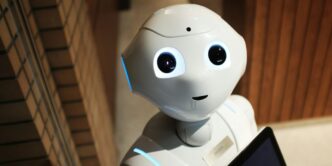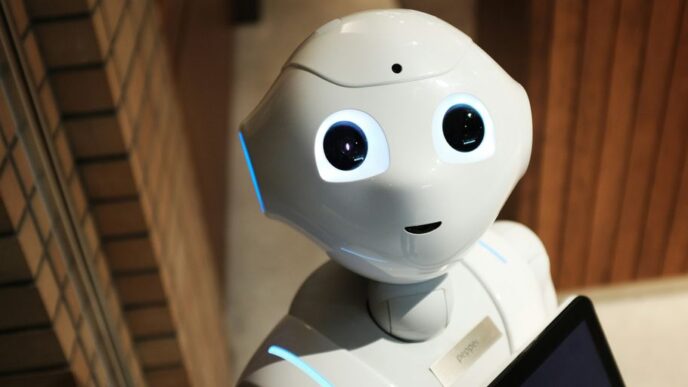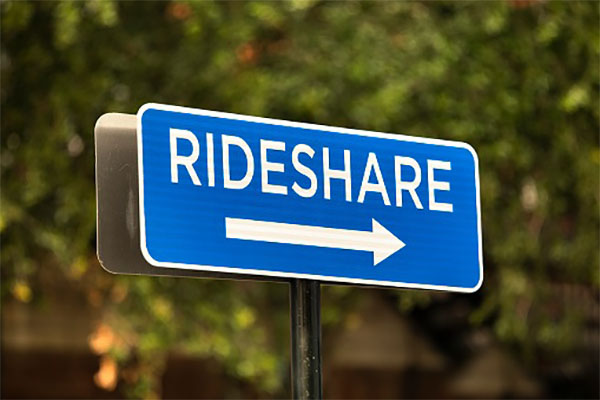
By Lance Eliot, the AI Trends Insider
Norfolk Southern Corp is doing a makeover of some rather convoluted trainyards.
Turns out there are freight railroads that funnel into hubs that have been run the same way for over a century. Generally, freight trains roll into these hectic hubs, the workhorse trains sit around idly waiting for their cargo, and when things seem to reach a suitable readiness of loaded trains ready to roll, the freight trains then head-out on their treks.
It is reportedly a remarkably ad hoc activity and overseen by a seat-of-the-pants approach.
The hope by several of the major train firms, acting as freight haulers, will be to transform this seemingly chaotic hub activity into a precision of scheduling and efficiency.
By revamping the freight train operations, there are intentions to make this complicated dance into one that is tightly woven with specific entry and exit times, predicted in-advance, and carefully tracked schedules. Presumably, this will allow for more freight movement, more timely freight movement, and make better use of the railroad’s scarce resources. Think of an airport with the daily and moment-to-moment ballet of planes arriving and departing, doing so based on published schedules, along with sticking to the timetables as much as possible.
Precision Scheduling Railroading (PSR)
The notion of transforming the freight train operations is being referred to as Precision Scheduling Railroading (PSR).
In theory, the PSR approach should be able to achieve the desired boosts in efficiency and effectiveness.
Having done quite a number of business process revamps in my working career, I can attest that the theory is often easier than the practical reality. I’m sure there is a chance that the PSR might at first fail to adequately model the realities of the freight train operations, perhaps leading to worse chaos and poorer efficiencies and effectiveness at the get-go.
It takes a lot of elbow grease to make sure that formerly by-hand efforts are not forsaken as somehow backward and inappropriate. The odds are that those manual methods evolved over many years and include lots of workarounds that keep the trains rolling. It might not be the most efficient approach, but it gets the job done. There is a chance that a new system could upend that approach and inadvertently foul things up, albeit only initially, once the kinks get ironed out.
This effort also needs to consider the ramifications of upstream and downstream vital touch-points.
Will the freight train customers be able to accommodate a more measured schedule?
Those customers are likely making use of processes and operations that assume the hub has an ad hoc schedule. When the hub changes to a more precise and tenacious schedule, those customers will need to likewise alter how they do their business.
I mention this aspect because sometimes a business process change is narrowly focused and fails to consider the cascading impacts. You might fix the hub, but meanwhile all the feeders into the hub and the feeds out of the hub are entering into a set of processes and systems that won’t know what to do with the revamped approach. This will undercut the hub changes and possibly befuddle those that had assumed they would right away witness crucial improvements in efficiencies and effectiveness.
The hub itself has its own constraints too, that need to be considered.
Let’s assume that there are a set number of tracks, N, and you come up with a schedule that assumes there are N+1 tracks, well, that’s going to be a problem for those workers at the hub (not enough tracks to abide by the system produced schedule!).
Or, maybe the scheduling system assumes that all N tracks can be used, but it could be that on some days a given track has problems and needs to be repaired before it can be used, so there are really only N-1 or N-2, etc. available tracks. Does the scheduling system take that kind of contingency into account?
You are going to have some number of trains coming into the hub, a number T. Meanwhile, there are some number of trains trying to exit from the hub, a number X. Can those T coming into the hub do so on that number of tracks N, while at the same time dealing with the X number of trains aiming to get out of the hub on those same tracks N?
In today’s modern age, there are lots of excellent scheduling systems that are used for a variety of industries, and can handle these kinds of complexities, thus the train hub is not unique or an impossible operation to come under PSR. The point is that it is not as easy as it might seem at first glance. Switching over from an older set of processes to a new set can be tricky and slamming in a fancy scheduling system is not something you can do overnight.
I’d like to focus your attention on another kind of scheduling problem that will soon become a notable and visible concern.
It has to do with the advent of ridesharing.
Ridesharing as a Scheduling Problem
A few months ago, I was visiting a company on the East Coast that was outside a downtown area and not especially close to any kind of public transportation. I had been invited to attend a session at the firm that took place each Tuesday and involved a gathering of managers from throughout the firm, all coming to HQ from a variety of places across the United States.
There was a train station that I had been advised would be a handy place for me to arrive at and then use a taxi or ridesharing to get over to the HQ building.
I did so.
After a full-day of discussions, the Tuesday event ended promptly at 6:30 p.m. The firm prided itself on doing things on-schedule and had made sure that each of the sessions started and ended precisely on-time.
I happened to glance out the window of the HQ at 6:15 p.m. and noticed that cars seemed to be gathering out on the nearby streets.
Lots of cars.
It almost looked like a flock of birds that were coming to get some leftover food scraps. There was a lot of hustling and bustling going on. Some cars were cruising back-and-forth, while others were standing still at curbs, and a few had pulled into actual parking spots.
What was happening?
It turns out that the local ridesharing and taxi services all knew that the HQ had these Tuesday events and that the events ended at precisely 6:30 p.m.
As a result, these car services were all vying to be nearby when the exodus of visitors wanted to all head-out.
I rode in one of the ridesharing cars and spoke to the driver. He explained that when the Tuesday meetings first began, only a few of the ridesharing drivers knew about it. They were caught somewhat off-guard and there weren’t enough cars arriving in time for the 6:30 p.m. exit, meaning that many of those that wanted to get a ride had to wait. Furthermore, some drivers arrived belatedly, getting there at say 7:00 p.m., and the rush of people needing rides had by then dissipated.
Word spread among the ridesharing and taxi services that on Tuesday nights at 6:30 p.m. there would be a swelling of demand for rides at this location. Many of these drivers would normally not have much traffic at that time because the area was outside of a downtown location. This HQ event represented a high potential for fares, including some rides that would be longer and more profitable than doing the usual neighborhood and grocery store kinds of runs.
It was fascinating to witness this somewhat “spontaneous” assembly of ridesharing and taxi services to meet the Tuesday night demand. I could see that not all of the assembled cars were going to get riders. There was no predetermined balancing of supply and demand. The driver of my ridesharing lift told me that the Tuesday night occasions had become overburdened with too many lift cars, making the situation into a cutthroat effort to grab riders.
He explained that the closer that a car could physically get to the HQ building, the higher the odds of getting a rider. But most of the other drivers figured this out too, and so they jockeyed to get close to the building. It became a raw act of trying to outmaneuver other cars and push or shove your way closest to the HQ office.
Some wised up and realize that in a first-to-arrive mode, those ridesharing cars and taxis that got there the soonest were able to secure a spot closest to the building. Gradually, the cars began to arrive sooner and sooner, because of the competitiveness of wanting to get one of those vaunted slots nearest to the building. Eventually, some of the ridesharing and taxi cars were arriving a full hour early, simply to get a vaunted spot next to the exit doors of HQ.
You must have some sympathy for these working stiffs, since my driver pointed out to me that by arriving sooner, you did get a higher chance of getting a fare, but this also meant that you likely were spurning other possible fares that you might have gotten at say 5:30 p.m. or 6:00 p.m., since it would have kept you away from getting to the building early.
Which was better, these drivers must have pondered, not be at the building early enough and therefore possibly get other fares elsewhere and but end-up at the low-end of fare chances at 6:30 p.m. or arrive early to the HQ to essentially guarantee you’d get a fare, and yet be idle and unpaid during that waiting time.
A few weeks later, I came back to one of the Tuesday events and found out that the HQ had decided to step into the car lifts aspects and try to straighten things out.
The HQ had made a deal with one particular ridesharing firm for picking up of the riders at 6:30 p.m., doing so by negotiating a special rate for the riders and turning the otherwise “catch as catch can” into a more rigorous process. This meant that the other ridesharing firms and taxi services now realized that at best they might get some leftover crumbs, and so they opted to no longer come over to the HQ to try to get riders.
Interestingly, the problem now for some riders was that there weren’t enough cars available to satisfy the demand. My guess was that the HQ would be talking with the ridesharing firm about ensuring that enough cars would show-up to meet the demand. The lower price of the fares was handy, yet there was also the need to make sure there were enough cars to provide lifts, and not let the wait time get out-of-hand.
This was especially the case since the Tuesday visitors were used to the idea that there would be an overwhelming number of cars and the odds of instantly getting a lift had been extremely high, prior to the switchover to a specific ridesharing firm. The old way of doing things seemed to have led to a tremendous amount of supply of cars and the riders had the upper hand. Now, in this more reasoned approach, the riders seemed to be less catered to. I’m sure that the next time I go to the Tuesday event, those kinks will have been likely worked out.
I hope you can see that this story is yet another example of a type of scheduling problem.
Similar to the freight trains, there are a multitude of needs for transport in this ridesharing example, and a need to figure out the balance of supply and demand.
You might be able to leave things to a Darwinian approach of letting nature kind of work things out, akin to what happened at first with the ridesharing and taxi firms that wanted to serve the riders at HQ, and what has seemingly occurred at the freight train hubs.
Unfortunately, the ad hoc method can be a hit-or-miss and instead, presumably, a well-design and well-implemented approach is likely to produce better results, once it has been put in place and tweaked accordingly.
For my article about ridesharing, see: https://www.aitrends.com/selfdrivingcars/ridesharing-services-and-ai-self-driving-cars-notably-uber-in-or-uber-out/
For my Top 10 predictions about AI self-driving cars, see: https://www.aitrends.com/selfdrivingcars/top-10-ai-trends-insider-predictions-about-ai-and-ai-self-driving-cars-for-2019/
For human in-the-loop aspects, see my article: https://www.aitrends.com/ai-insider/human-in-the-loop-vs-out-of-the-loop-in-ai-systems-the-case-of-ai-self-driving-cars/
For my article about vehicle caravans, see: https://www.aitrends.com/selfdrivingcars/traveling-in-vehicle-caravans-and-the-advent-of-ai-self-driving-cars/
AI Autonomous Cars and Ridesharing Aspects
What does this have to do with AI self-driving driverless autonomous cars?
At the Cybernetic AI Self-Driving Car Institute, we are developing AI software for self-driving cars. Most pundits predict that AI self-driving cars will be used as ridesharing cars, doing so to recoup their cost and earn some added dough by fully utilizing the self-driving cars. This will likely lead to some hefty scheduling issues.
Allow me to elaborate.
I’d like to first clarify and introduce the notion that there are varying levels of AI self-driving cars. The topmost level is considered Level 5. A Level 5 self-driving car is one that is being driven by the AI and there is no human driver involved. For the design of Level 5 self-driving cars, the auto makers are even removing the gas pedal, brake pedal, and steering wheel, since those are contraptions used by human drivers. The Level 5 self-driving car is not being driven by a human and nor is there an expectation that a human driver will be present in the self-driving car. It’s all on the shoulders of the AI to drive the car.
For self-driving cars less than a Level 5 or Level 4, there must be a human driver present in the car. The human driver is currently considered the responsible party for the acts of the car. The AI and the human driver are co-sharing the driving task. In spite of this co-sharing, the human is supposed to remain fully immersed into the driving task and be ready at all times to perform the driving task. I’ve repeatedly warned about the dangers of this co-sharing arrangement and predicted it will produce many untoward results.
For my overall framework about AI self-driving cars, see my article: https://aitrends.com/selfdrivingcars/framework-ai-self-driving-driverless-cars-big-picture/
For the levels of self-driving cars, see my article: https://aitrends.com/selfdrivingcars/richter-scale-levels-self-driving-cars/
For why AI Level 5 self-driving cars are like a moonshot, see my article: https://aitrends.com/selfdrivingcars/self-driving-car-mother-ai-projects-moonshot/
For the dangers of co-sharing the driving task, see my article: https://aitrends.com/selfdrivingcars/human-back-up-drivers-for-ai-self-driving-cars/
Let’s focus herein on the true Level 5 self-driving car. Much of the comments apply to the less than Level 5 self-driving cars too, but the fully autonomous AI self-driving car will receive the most attention in this discussion.
Here’s the usual steps involved in the AI driving task:
- Sensor data collection and interpretation
- Sensor fusion
- Virtual world model updating
- AI action planning
- Car controls command issuance
Another key aspect of AI self-driving cars is that they will be driving on our roadways in the midst of human driven cars too. There are some pundits of AI self-driving cars that continually refer to a Utopian world in which there are only AI self-driving cars on the public roads. Currently there are about 250+ million conventional cars in the United States alone, and those cars are not going to magically disappear or become true Level 5 AI self-driving cars overnight.
Indeed, the use of human driven cars will last for many years, likely many decades, and the advent of AI self-driving cars will occur while there are still human driven cars on the roads. This is a crucial point since this means that the AI of self-driving cars needs to be able to contend with not just other AI self-driving cars, but also contend with human driven cars. It is easy to envision a simplistic and rather unrealistic world in which all AI self-driving cars are politely interacting with each other and being civil about roadway interactions. That’s not what is going to be happening for the foreseeable future. AI self-driving cars and human driven cars will need to be able to cope with each other.
For my article about the grand convergence that has led us to this moment in time, see: https://aitrends.com/selfdrivingcars/grand-convergence-explains-rise-self-driving-cars/
See my article about the ethical dilemmas facing AI self-driving cars: https://aitrends.com/selfdrivingcars/ethically-ambiguous-self-driving-cars/
For potential regulations about AI self-driving cars, see my article: https://aitrends.com/selfdrivingcars/assessing-federal-regulations-self-driving-cars-house-bill-passed/
For my predictions about AI self-driving cars for the 2020s, 2030s, and 2040s, see my article: https://aitrends.com/selfdrivingcars/gen-z-and-the-fate-of-ai-self-driving-cars/
Returning to the topic of AI self-driving cars and ridesharing, along with the topic of scheduling, let’s consider what the future is likely to present.
I’ve stated in my writings and speeches that the advent of AI self-driving cars will be more so than solely being done as fleets.
As background for you, some pundits claim that no one will individually own an AI self-driving car because such vehicles will be overly expensive. Therefore, in this theory, AI self-driving cars will be owned by the likes of either automakers, tech firms, or ridesharing firms, and be considered as working in collectives that we might call a fleet of AI self-driving cars.
That seems like a rather narrow view of the future.
AI Self-Driving Cars to Become a Flood of Ridesharing
If an automaker or tech firm or ridesharing firm can make a buck off of AI self-driving cars, why wouldn’t individuals seek to do the same?
Those with this other theory are narrow thinking in that they view car ownership as simply and exclusively a cost. Today, when you buy a car, you use it to go to work, and going on vacation, and driving to the store, etc. You aren’t making money by owning the car. It is your means of conveniently getting around.
The advantage of an AI self-driving car is that it comes with a built-in driver (in the case of true Level 5 AI self-driving cars). This means that the AI self-driving car can be used whenever you want, and you don’t need to be the driver, and nor do you need to find or hire a driver. Keeping in mind too that most people only use their car for about 5-10% of the day, a car is a tremendously underutilized asset that can be deployed to your personal and financial well-being.
How could you afford an AI self-driving car if it might cost into the hundreds of thousands of dollars? Easy, by turning it into a money maker. While you are at work, you send your AI self-driving car out to do ridesharing. When you are asleep, you do likewise.
This will create a huge cottage industry of small businesses, whereby you purposely buy an AI self-driving car, likely taking out a loan to cover it, and are anticipating that the revenue generated by the AI self-driving car will make your purchase worthwhile. There is a chance of a solid ROI (Return On Investment) for this approach of buying an expensive asset and putting it to work.
I’m predicting, perhaps boldly, we’ll see a flourishing cottage industry surrounding the advent of AI self-driving cars.
For the affordability of AI self-driving cars, see my article: https://www.aitrends.com/selfdrivingcars/affordability-of-ai-self-driving-cars/
For the non-stop aspects of AI self-driving cars, see: https://www.aitrends.com/selfdrivingcars/non-stop-ai-self-driving-cars-truths-and-consequences/
For my article about the crossing of the Rubicon and AI self-driving cars, see: https://www.aitrends.com/selfdrivingcars/crossing-the-rubicon-and-ai-self-driving-cars/
For recalls that will undoubtedly happen to AI self-driving cars, see my article: https://www.aitrends.com/selfdrivingcars/auto-recalls/
For my article about the future of jobs including AI self-driving car repair services, see: https://www.aitrends.com/selfdrivingcars/future-jobs-and-ai-self-driving-cars/
That being said, I’ve also forewarned that this blossoming might get somewhat out-of-hand.
Besides individuals jumping into the fray, and besides the usual suspects like ridesharing firms and automakers, you might as well add other kinds of firms too. You could be a firm in a completely unrelated industry and see the writing on the wall that money can be made off the backs of AI self-driving cars.
Today’s firms that make money from the utilization of cars for ridesharing have to jump through lots of hoops to do so. Ridesharing firms need to find drivers and keep those drivers happy. No need to do so for an AI system that’s your always available driver, it’s happy already (well, kind of). You can also readily outsource things like the maintenance needed for the self-driving cars and other kinds of logistics aspects.
If my predictions come true, we’ll see a flood of AI self-driving cars that are flowing in and around our streets. This will be the next gold rush.
Let’s consider then the notion of AI self-driving cars roaming around our streets.
Pundits tend to imagine a Utopian world in which you come out to the street and within seconds there is an AI self-driving car there at your beck and call. Sounds great! We will all be able to reduce delay time in getting a ride. Rides on demand.
Yes, that might be true, but how did that AI self-driving car get to you, doing so quickly?
You might have requested it in-advance, perhaps via a mobile app, and then when it arrived, you went outside to get into it for your ride. That’s one way to arrange the ride.
Another involves simply going out to the curb and hailing a ride. I’d dare say most of us are using that method these days. You used to hail a cab by waving frantically at cabs that wandered past you. Now, you use your mobile app to see how far away a ride might be, and once you select it, the driver heads in your direction.
If you choose to use a particular ridesharing service, it means that you are only going to be seeing those available ridesharing cars that are perchance signed-up with that service. There might be other ridesharing services that have available cars and those are even closer to your position at the curb, at that moment, but you tend to ignore them and go with the ridesharing service that you prefer.
Suppose in the future that there are zillions of ridesharing cars that are nearby when you happen to go out to the curb. Rather than being focused on one particular ridesharing firm, you might be willing to go with whichever ridesharing car happens to get there soonest. Of course, you also care about the cost, and the quality of the ride, and let’s assume for the moment that’s a given.
Put on your hat of the firms and individuals that will own AI self-driving cars and are trying to make money by using those self-driving cars as a ridesharing service.
They want to put their AI self-driving car in places that will maximize their revenues of doing ridesharing. This means they want their AI self-driving car to be chosen for a paying fare. They also want to minimize the unused time of their AI self-driving car, which essentially is nonpaying, such as when their AI self-driving car is roaming to find a fare.
If you knew that in say downtown Los Angeles that Wilshire Boulevard will have the greatest number of potential riders between 5 p.m. and 6 p.m. on weekdays, where would you want your AI self-driving car to be?
Well, it’s similar to the drivers at the Tuesday events, namely they wanted to be near the action. You would not want your AI self-driving car roaming five blocks away, since another AI self-driving car that’s roaming on Wilshire Boulevard is likely going to snag the fare that your AI self-driving car might have been able to get, but your AI self-driving car was not in the right place.
The Future of Ridesharing via AI Self-Driving Cars
Here’s what might happen.
All these businesses that have AI self-driving cars are going to want to funnel them into whatever places and at whatever times will earn them the most in fare revenues. Since they all want to do this, you’ll have a grand convergence of AI self-driving cars, all flocking to the same places, ones that seem to offer the most chance of getting riders.
For the Tuesday events, recall that the ridesharing cars and taxis figured out on their own via word-of-mouth that it made sense to hangout at the HQ on Tuesday evenings, along with jockeying for physical position. That’s exactly what’s going to happen with AI self-driving cars that have been put into ridesharing service, which I’d postulate will be most of the AI self-driving cars that will exist on our roadways.
In the downtown Los Angeles quarter, you could have a flood of AI self-driving cars, all jockeying for position. All vying to get those riders. They would swarm like moths to a flame. Those that own those AI self-driving cars don’t really care about the traffic snarl, other than if it reduces their chances of their AI self-driving car not making a buck because of the density of competition.
For the human riders that want a ride, it could be a nirvana of choices. Those AI self-driving cars all coming to get you, and presumably the owners might have setup various special discounts and incentives. Use the XYZ ridesharing AI self-driving car that’s coming down the street right now, and you’ll get a 10% off for picking it, rather than using the ABC ridesharing AI self-driving car that’s this moment pulled to the curb where you are standing. Isn’t it worth the 10% off to wait another 15 seconds for your ride?
I’d like to also take a momentary step back and ask you to contemplate what this kind of flood of AI self-driving cars will do to the traffic situation.
If you have a belly full of AI self-driving cars trying to all circle around and around among a few blocks area in downtown, the resultant impact to traffic movement will be startling. Gridlock will ensue. Those AI self-driving cars don’t care per se about sitting in traffic, which humans tend to avoid. The only thing to curtail the AI self-driving car from sitting in traffic is the opportunity lost of potentially snagging a fare, because the AI self-driving car was stuck in traffic a block from where a rider was seeking to get a ride.
This also brings up another pet peeve of mine.
Pundits keep saying that we won’t need parking lots anymore, due to the emergence of AI self-driving cars. The logic seems to be that your AI self-driving car will roam while you aren’t using it. It won’t park. Instead, it just keeps roaming.
Keep in mind there is a cost involved in having your AI self-driving car roaming. For each minute or hour that it is underway, it is like any car that will be encountering wear and tear. There is also the cost of the electrical power that it is consuming, if an EV, or the cost of gasoline if conventionally powered. This constant roaming is not cost free.
And, as per my earlier comments, your roaming AI self-driving car is going to be plugging up traffic. All of those roaming AI self-driving cars are going to mean more cars on tight city streets. I dare say that most pundits don’t seem to realize what this continual roaming will do. I’ll also mention that this continual roaming will have a damaging effect on the roadways, which is another cost that needs to be considered (at least for the entities that maintain the roadway infrastructure).
My view is that we are going to need to have waiting areas for AI self-driving cars, essentially parking lots. This would be akin to what you see done at airports. There are ridesharing and taxi waiting areas that are parking lots, though the cars might be moving slowly or waiting in line, and they gradually are released from the waiting area to go to where they can pick-up fares.
Some pundits would say that sure, go ahead and create those waiting areas (parking lots), but put them further away from say the downtown area. You can maybe get cheaper land outside of the downtown, and it can be unused property that nobody otherwise wants to use (abandoned cow pastures made into a waiting area?), since it isn’t in downtown, and have the roaming AI self-driving cars sit there.
I ask you, how does that square with the idea that the owners of those AI self-driving cars want their self-driving cars to be in the places that will maximize their fares?
If my AI self-driving car is sitting in a waiting area that’s twenty minutes from downtown Los Angeles, it is not going to make much money, especially in comparison to a competitor that has their AI self-driving car driving around and around in the downtown streets to snag fares. Plus, even if it gets a reservation to go pick-up a fare, you now have the cost of the AI self-driving car going the twenty minutes from the waiting area to downtown (and, the cost of when the AI self-driving car went to the waiting area to begin with).
My point being that it seems doubtful to believe that you can relinquish back all of the parking lots in congested areas by either betting on roaming AI self-driving cars or by thinking that you’ll simply relegate the AI self-driving cars to sitting outside of town in some non-congested place and waiting to be hailed.
We all need to be thinking more clearly about these matters. Shortcuts as a way of thinking is going to make for larger problems.
Precision Scheduling of Autonomous and Human-Based Ridesharing (PSAHBR)
I had mentioned that the Tuesday evening desperation of taxis and ridesharing services was somewhat dealt with by doing things in a more planned way. Similarly, the freight train hubs are going to be transformed into a more rigorous and systematic form of coordination, via the PSR (Precision Scheduling Railroading).
One solution to the AI self-driving car flood of ridesharing might be to consider putting in place a kind of universal Precision Scheduling of Autonomous and Human-Based Ridesharing (PSAHBR) system.
In essence, ridesharing services would put into inventory of this universal scheduling system their AI self-driving cars as an available ridesharing vehicle. The system would then try to schedule the placement of the AI self-driving cars to meet demand.
It will be a complicated algorithm, that’s for sure.
In a manner of speaking, it is reminiscent of the National Resident Matching Program (NRMP), often referred to as The Match, which occurs in the United States and involves the matching of U.S. medical school students into the available residency programs at teaching hospitals each year. A non-profit non-governmental entity was set up to do this. If you aren’t aware of it, you might want to look online about the matter, and it uses a famous problem known as the “stable marriage problem” as an underlying way to find an algorithm to deal with the matching process.
The mighty PSAHBR would be a kind of matching that involves the pairing of those seeking a ride with an available ridesharing car. Notice that I did not say that it would necessarily be an AI self-driving ridesharing car that is only in the inventory of the PSAHBR system.
As I’ve mentioned earlier, we are going to have a mixture of human driven cars and AI self-driving cars for quite a while. If you were to design the PSAHBR for solely dealing with the assignment of AI self-driving cars, it would mean that the human driven ridesharing cars would not be included.
Those human driven ridesharing cars could then potentially poach the rides that the AI self-driving cars are trying to get. Or, you would have a backlash of the human driven ridesharing cars that those human drivers are being discriminated against by the AI self-driving car availabilities, and perhaps the human drivers weren’t able to get rides that were instead being handed to the AI self-driving cars.
Presumably, the PSAHBR would smoothen out the traffic situation and aim to reduce the continual and somewhat wasteful aspects of ridesharing roaming, whether by human drivers or by AI self-driving cars. The system would need to have an indication of where riders tend to want rides, and by using Machine Learning and Deep Learning could try to predict when rides are needed, along with figuring out optimal ways to arrange for the ridesharing inventory to be available at the right places at the right times.
One question right away that one needs to ask involves whether those that own the ridesharing cars are going to voluntarily seek to use such a system. It all depends.
If the PSAHBR can do a good enough job of scheduling, it would imply that the owners of the ridesharing services will earn more revenue and have less cost than if they had tried to just let their ridesharing cars roam. Obviously, the owners would be making a decision about whether it is better to go free or to use the system.
That being the case, there might be localities that decide to force the ridesharing services to use such a system. Akin to my earlier indication about airports, the airport authority is able to ban ridesharing from freely entering into the airport and force the ridesharing services to comply to the rules that are established. Presumably, a city could do likewise.
Who would put in place the PSAHBR?
It could be a non-profit non-governmental entity that was established to create and keep in shape such a system.
Or, it could be a governmental agency that opts to do so.
One would certainly expect that the major ridesharing services would be tending to craft something like this anyway, if nothing else to try and watch over their own fleets. Would other fleets join in?
Would the mom-and-pop cottage industry join in?
Likely it would depend upon the perceived “fairness” of how the ridesharing cars are given fares.
For more about regulations in AI self-driving cars, see my article: https://www.aitrends.com/selfdrivingcars/assessing-federal-regulations-self-driving-cars-house-bill-passed/
For my article about how induced demand will impact the future of AI self-driving cars, see: https://www.aitrends.com/selfdrivingcars/induced-demand-driven-by-ai-self-driving-cars/
For the potential of an invasion of AI self-driving cars, see my article: https://www.aitrends.com/selfdrivingcars/invasive-curve-and-ai-self-driving-cars/
For my article about predicting the future of AI self-driving cars, see: https://www.aitrends.com/ai-insider/key-equation-for-predicting-year-to-prevalence-for-ai-self-driving-cars/
Conclusion
Whatever does happen in the future, I think it is a reasonable bet that once AI self-driving cars become prevalent, there will be a swirling of ridesharing that will make our heads spin. At first, it might seem like a welcomed capability. After things turn ugly due to the over abundance of ridesharing, there will be a wringing of the hands about what to do.
The public and the regulators are likely to realize that something needs to be done, once traffic snarls emerge and there is a cutthroat vying for fares.
Can someone get all of the ridesharing services to voluntarily come together into a universal scheduling system, or will it require a more heavy hand to do so?
Time will tell.
Meanwhile, for those of you that are interested in developing new and innovative apps, consider the kind of scheduling system that the PSAHBR would be, and get coding.
Copyright 2020 Dr. Lance Eliot
This content is originally posted on AI Trends.
[Ed. Note: For reader’s interested in Dr. Eliot’s ongoing business analyses about the advent of self-driving cars, see his online Forbes column: https://forbes.com/sites/lanceeliot/]

